Last updated: 9 February 2003
|
Last updated: 9 February 2003 |
This page documents Nikon digital camera models comments, tips, and photos. Search the site for "coolpix" for other items about the Nikon Coolpix digital cameras. Contributions welcome.
Subject: Nikon Coolpix 995 review Sent: Monday, August 6, 2001 20:19:20 From: DonMcClelland@webtv.net (Donald McClelland) Hope this link works. Let me know how you like it. It expains and reviews the features in even more detail than the instruction book at times with accompanying photos. By the way, you might be able to put the infinity setting in memory before setting the timer. Don http://www.dpreview.com/reviews/nikoncp995/Mike here: I just spent about 30 minutes fussing with the menus on my new Coolpix 995. I now have the camera configured for Automatic operation (the A on the dial) and fully manual (with the M setting). Fully manual lets me completely control the shutter speed and aperture. Plus I discovered the INFinity focus setting (hold the lower left button and turn the dial; scrolls through discrete distance settings, the last one being INF. Now I think I'm set for astrophotography in the manual mode.
[8/12/01]
Mike here: I mounted the Coolpix 995 to the ETX using the Scopetronix Digi-T (see my review on the Accessories - Astrophotography page) for afocal photography. My first captured image was the Sun (made with the ETX-90RA, Scopetronix 25mm eyepiece, and a Thousand Oaks Solar Filter). I used the Automatic setting, with the lens set to focus at infinity.

Here is a Mars shot from 11 August 2001, made with the camera set to fully manual. This was the best shot (ETX-125EC, 25mm eyepiece plus 2X Barlow Lens, no filters). Exposure info: SHUTTER: 1/125sec, APERTURE: F2.6, ISO 100
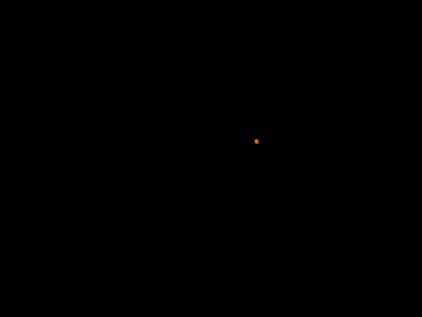
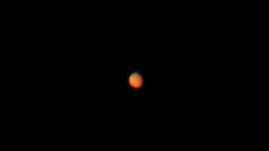
Cropped from the same 1280x960 image
Unfortunately, Mars is undergoing a large dust storm at this time so surface markings are lost. The only exception being the white-ish area in the North Polar Region. But its red-ish color is very evident.
Here is a nice photo of the beautiful double star Alberio from 11 August 2001, made with the camera set to fully manual. This shot (ETX-125EC, 25mm eyepiece) shows the distinctive yellow and blue colors of the stars. Exposure info: SHUTTER: 1/2sec, APERTURE: F2.6, ISO 100
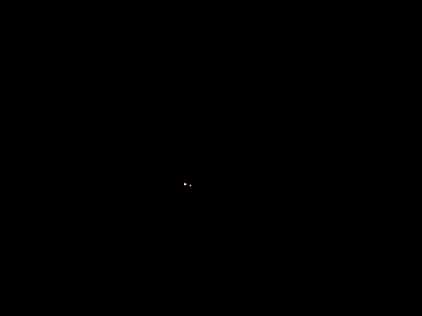
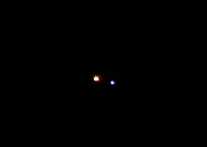
Cropped from the same 1280x960 image
These next two photos are an attempt at capturing the Lagoon Nebula on 11 August 2001. These shots (ETX-125EC, 25mm eyepiece), made with the camera set to fully manual, shows the some nebulosity and stars but also some trailing during the short exposure. Obviously I have to work on that! Exposure info: SHUTTER: 8.00sec, APERTURE: F2.6
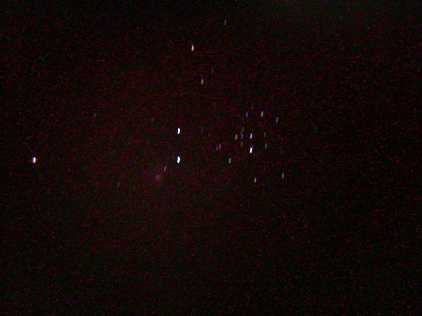
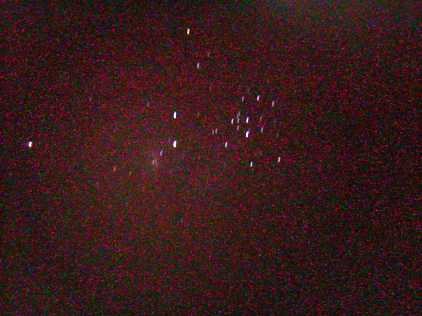
Full frame, reduced from the original 1280x960 image, ISO 800, no noise reduction
All of the above shots were done with the camera in Macro mode and the self-timer was used to allow the vibrations to dampen out. There was some adjustment of the "levels" done in my image processing software. One really nice feature of the Coolpix 995 is that it will write out a text file to the Compact Flash memory card that documents the date/time, exposure setting, and camera info. This makes it easy to know what you did for each photo.
There are only two drawbacks that I've come across so far. There is a strobe light that flashes in the macro self-timer mode that is distracting in the dark. I haven't found a way to turn that off. And since the camera does not accept a standard 35mm camera shutter cable, you really do have to use the self-timer to allow time for the vibrations resulting from pressing the shutter release to dampen out. This limits you to the maximum exposure time setting of 8 seconds, whereas with the Bulb setting you could have increased that to 60 seconds by holding the shutter button down. There is a remote shutter release cord but it controls the camera electronically and costs $135!
The Nikon Coolpix 995, combined with the Scopetronix Digi-T, seems to allow for very nice yet simple astrophotography of many objects. I will add more as I use it. If you have any Coolpix 995 tips or Coolpix 995 astrophotos, pass them along.
Subject: Astro-photos Sent: Wednesday, August 15, 2001 08:41:13 From: Rabbitrv@aol.com I finally got the ETX125EC sorted out and got the Nikon Coolpix 950 fitted with the Scopetronix Digi-T attached to the standard 26mm lens and managed to get these photos taken before the weather turned bad (we are in winter time here in Australia). The first one is of Mars and the second one is of the splitting of Alpha Centauri. Both photos where taken using the camera on the manual setting with infinity set as the focusing distance. I use the auto setting to take photos as this gives the camera and scope time to stop vibrating before the shot is taken. More photos coming soon , when I get the barlow and 9.7mm lens ......lol Best Regards ...... Steve
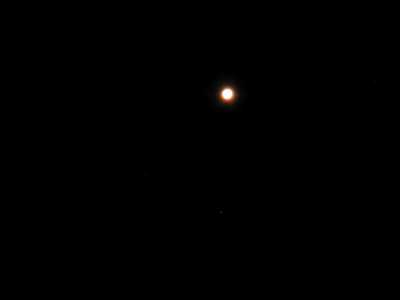
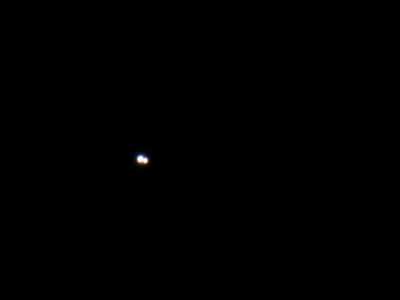
Subject: Nikon 990/995 coolpix with ETX Sent: Saturday, August 18, 2001 00:04:58 From: bcherkas@earthlink.net (Brian Cherkas) I recently purchased the Nikon mc-eu1 wired remote for the coolpix 990 series cameras. A couple of major improvements to astrophotography with this unit is that the remote allows hands off shooting without using the timer function. This allows a bit more flexibility when shooting. Also, besides time-lapse photography (which I have yet to find a real use for), the best part is that it allows you to shoot with the remote hands-off in infinity mode. This is something that the 990 will not do (not sure of the 995). Also, you can zoom in and out with the wired remote. The remote is fairly expensive at around $130.00 U.S. dollars, but depending upon the users needs may be worth the investment. Here's a link to the product - but no endorsements as to the company: http://www.aaadigitalcameras.com/nikon_mceu1.html Brian Cherkas bcherkas@earthlink.netMike here: I have been considering the remote since the CP995 can go to 60 seconds. I have been able to set the camera manually to INFinity for long exposures at the telescope.
Subject: Moon Photos. (Rabbitrv) Sent: Sunday, September 9, 2001 4:24:42 From: Rabbitrv@aol.com I took some Moon photos with my ETX125EC on a cold night (early morning) in August (26/8/01). I live in Perth, the capital city of western Australia, even though I live close to the coast, I still get lots of light pollution, but the ETX seems to handle it very well with excellent images and great definition. I have not had the chance to try deep space objects yet as I'm waiting for my camera adaptor bits to arrive. I'm pretty new to this astrophotography so I'm still learning all the time and your website is an excellent help to me. Both photos where taken using my ETX125 and a Nikon Coolpix 950 held together with the Scoptronix Digi-T. I have found that the best way to setup the camera is on self timer for 10 sec, this gives the scope time to stop moving, and the camera set to manual and the shutter speed set at 1/60 or 1/125 and the focus set to infinity. Hope you can use them both Mike.....? Best Regards .... Steve Revell.
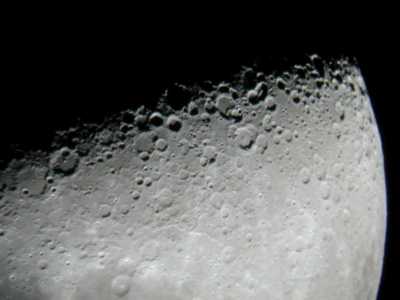
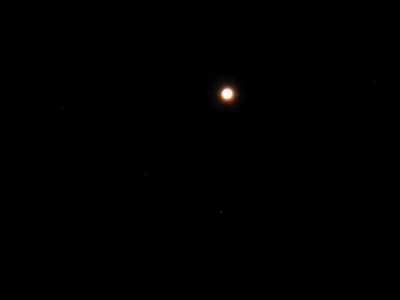
Subject: Nikon Coolpix remote control Sent: Friday, September 14, 2001 16:06:52 From: speacock@yahoo.com (Sean Peacock) This URL lists software that will control the Coolpix shutter. http://www.digital-camera.dk/ This URL shows how to convert the USB cable into a serial cable which is required for the above software. dcadiou.free.fr/coolpix/cable.htm Sean
Subject: /Review Nikon CP995 Sent: Thursday, September 20, 2001 21:52:15 From: DonMcClelland@webtv.net (Donald McClelland) Found this link on SAA and thought you might be interested. Let me know if you like it. http://panther-observatory.com/Review_CP995.htm By the way, how did the Coolpix work out at the star party? Are there any more pictures to be updated on the site, I liked the picture of saturn? DonMike here: No more photos from me from the Star Party but I hope to work more with the CP995 as I catch up on many things after being gone for three weeks in August and other things which have kept me from catching up.
Subject: digital astrophotos Sent: Saturday, September 29, 2001 2:32:23 From: gabor.kiss@profinter.hu (Gbor Kiss) I have seen your digital astrophotographing site, it is very nice, I like it a lot! I have my own, and very new site with my photos. Hope you are interested in them! The site is: http://home.talkcity.com/GaiaWay/GKiss All the best, Gabor KissMike here: Gabor uses a Coolpix 950.
Subject: Comment on Nikon Coolpix 995 page Sent: Wednesday, October 10, 2001 15:49:14 From: david.milne1@ntlworld.com (David Milne) Mike had a drawback with his strobe light on the self-timer, and I have a simple solution. I bit of dark tape over it - not dark enough to hide it completely (else he won't be sure it's working), but dark enough so the light isn't too bright. Regards,Mike here: True but it bothers me to have to tape over it at all. Of course, the light can be a bother as well!
Subject: Koolpix Photos ( Steve Revell) Sent: Thursday, December 27, 2001 23:28:55 From: Rabbitrv@aol.com Long time no see, have had some computer problems and been very busy over xmas. Thought I would send you these pictures taken with the Nikon Koolpix 950 and ETX125. Hope you enjoy .....Regards ...Steve.
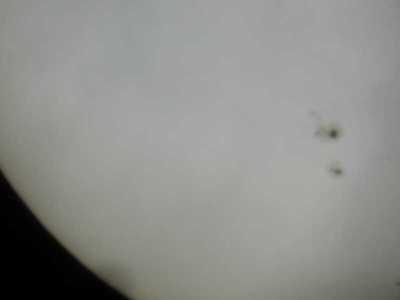
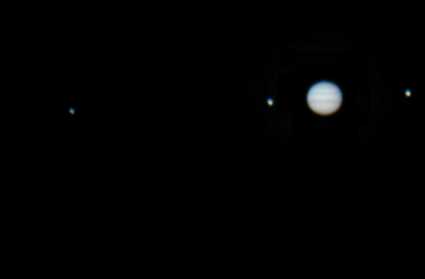
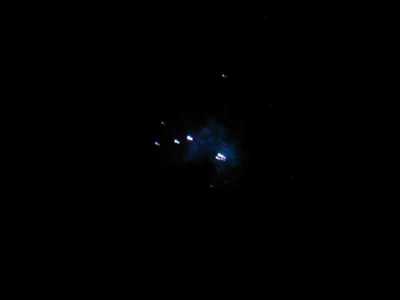
Subject: Thanks! Sent: Saturday, December 29, 2001 8:50:09 From: BOBCATH28@msn.com (BOBCATH28) Thanks Mike,for posting my lunar photos!I realize that they're only my first efforts but I expected more! I had problems with just about everything,including frost build-up on the meniscus plate.My camera is still quite new to me.After focusing the scope with eyeglasses on,the camera still had a mind of its own!I thought I disabled the auto-focus,but it still tried to focus on its own.The flash even went off a few times while exposing,I'm sure this greatly underexposed many of my early exposures.The timer seems to need to be reset and engaged after every shot.I still need more practice!!Do you know of anyone with similar cameras,equipment,and frustrations?? Thanks for the little help with the contrast!You should've seen the images before I sharpened and added my own contrast boost!!! I really appreciate your time and patience...and thank you for such a spectacular website!!!It is truly one of my all-time favorites!!!! Bob DerouinMIke here: A lot of astrophotography is trial-n-error. At least with digital cameras the errors can be deleted quickly! As other Coolpix users, yes, there are several. I'm slowly building up this Nikon Coolpix page (as well as others).
Subject: Nikon Coolpix 995 Sent: Saturday, December 29, 2001 9:35:46 From: jdslater@home.com (Jack Slater) I think I need to know more about what I can or can't do with it and my new ETX70.Mike here: See the Astrophotography page as well as the Accessory Reviews - Astrophotography page.
Subject: Please post... Sent: Saturday, December 29, 2001 19:35:00 From: BOBCATH28@msn.com (BOBCATH28) Could you please post this question in the Nikon Coolpix Astrophotography section!!............................ Has anyone out there in ETX land used the new NIKON Coolpix 885 with an ETX for lunar/planetary imaging??? I seem to have problems keeping the Flash off and the focus still 'runs'even though I set the camera to manual infinity focus!!Any solutions and/or tips would be greatly welcomed!!!Thanks all and Clear Skies!!!!!! Bob Derouin
Subject: My first picture using me ETX Sent: Saturday, December 29, 2001 19:35:30 From: Briguy730@msn.com (Brian Gaines) it really isn't that good...but I just thought I would send it in...I was only outside for 20 min (my hands were ice). I couldn't keep my hand stead enough for a good image, also I don't have a digi-t adaptor...but tell me some tips on what I should do...I couldn't seem to get the entire field of the moon in the camera... I was using a Nikon coolpix 995...tell me how I can get the entire field of view if u can...but any way thanks for your awesome web site...I don't know how to make the image smaller so u might want to do that
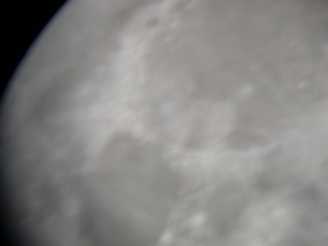
And:
how much does a digi-t cost...do u recommend me buying one...becaseu i cant keep my hand steady enough! with out a tripod to mount it on! well thanx for your helpMike here: See the Accessory Reviews - Astrophotography page.
Subject: Moon Picture Sent: Tuesday, January 1, 2002 1:42:58 From: Briguy730@msn.com (Brian Gaines) Here is my first real picture of the moon...i took a video using my NCP 995 (Nikon Coolpix 995) I took two pics and combined two images in astrostack (because thats all that will work)...tell me what u think
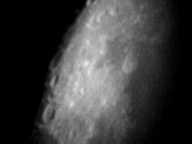
Subject: Moon Video Sent: Tuesday, January 1, 2002 10:34:07 From: BriGuy730@aol.com (Brian Gaines) here is a video...i thought this was the best video of the three that i took!
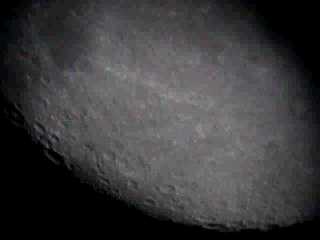
Subject: Paul Rini eyepieces Sent: Monday, January 7, 2002 08:06:27 From: divenuts@gte.net (divenuts) Once again thanks for helping my wife choosing the Nikon 995..I have had great time playing with it with my 125. I have attached my first Moon photo. The skies in Fla. have been un cooperative lately. Anyway, I was looking for an inexpensive 30mm and 40mm eyepieces and was unable to contact Paul Rini who had some pretty good reviews for an inexpensive eyepiece. I don't think he is dealing with individuals these days but I found a surplus outlet that sells them($17.50) and other plossels ($28). I ordered the Rini 30mm and the 40mm plossel(no Rini's) just to try with the Nikon/125 set-up. This is the web address of the store. http://www.surplusshed.com/index.cfm and my first sky photo, Thanks again for everything, Chuck Callaghan
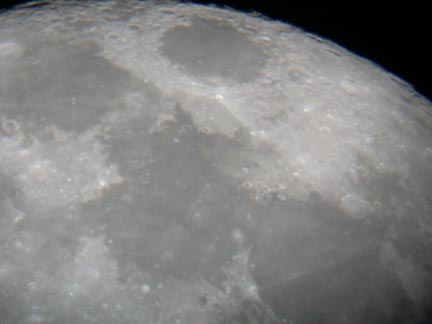
Subject: Image From the Jupiter Moon Conjunction (Dec.30/01) Sent: Monday, January 7, 2002 20:55:22 From: stankiewiczr@cogeco.ca (Rick Stankiewicz) The attached is an image taken with Nikon Coolpix 995 digital camera at 0530 hrs on December 30/01. I was in Peterborough, Ontario and there quite a veil of clouds. Juptier shines through easily though. Needless to say, there was no sign of the penumberal eclipse visible. The pairing of these two bodies was a nice sight however. Rick Stankiewicz Peterborough, Ontario Canada stankiewiczr@cogeco.ca
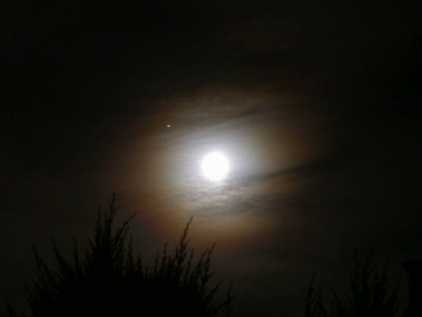
Subject: Nikon Coolpix Sent: Wednesday, January 9, 2002 18:17:52 From: spengelly41@hotmail.com (Sam Pengelly) While doiung some research on my coolpix 995 I ran into your astronomy page on the internet - I use my camera for photomicroscopy & found some stuff on downladable software to let your computer control the camera - haven't tried it yet but for me this is the ticket if it works - look at www.math.ualberta.ca/imaging/ good luck Sam
Subject: CoolPix Flash Sent: Friday, January 18, 2002 8:26:38 From: divenuts@gte.net (divenuts) I have found you can turn the flash OFF...look at page 133 in the manual. Finding the speedlight menu was the hardest part....lolMike here: Thanks but I think we are talking about two different lights. The one I was referring to is the rapidly flashing LED. You are referring to the flash unit, which can be closed (and so won't fire).
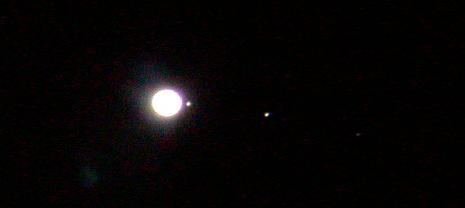
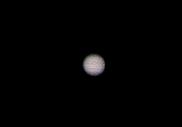
Shows some cloud bands on Jupiter
25mm eyepiece, 1/500 second exposure, ISO 800, no zoom, cropped from full-frame
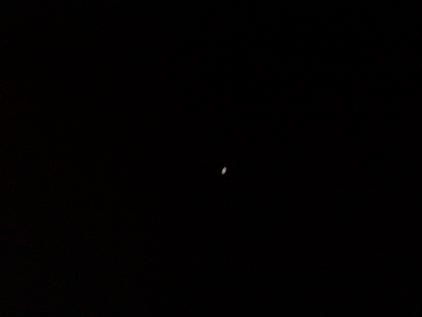
Saturn at full-frame
25mm eyepiece, 1/125 second exposure, ISO 800, no zoom, full-frame image
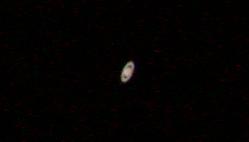
Same image of Saturn but cropped and not reduced
25mm eyepiece, 1/125 second exposure, ISO 800, no zoom, cropped from full-frame image
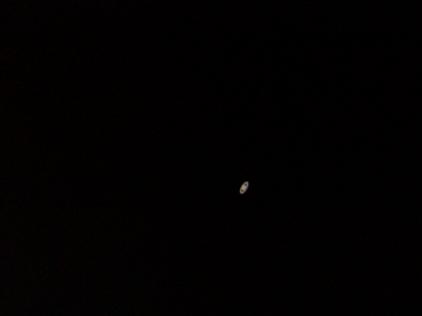
Saturn at full-frame
25mm eyepiece + 2X Barlow Lens, 1/60 second exposure, ISO 800, no zoom, full-frame image
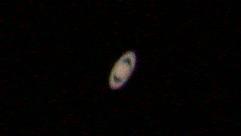
Same image of Saturn but cropped and not reduced
25mm eyepiece, 1/60 second exposure, ISO 800, no zoom, cropped from full-frame image
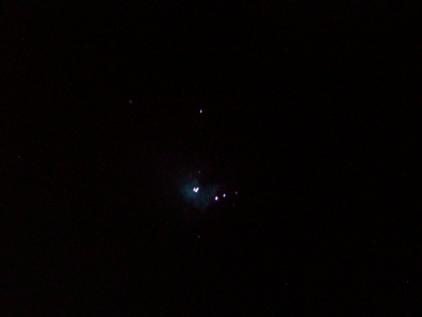
M42 in Orion at full-frame
25mm eyepiece, 2 second exposure, ISO 800, no zoom, full-frame image
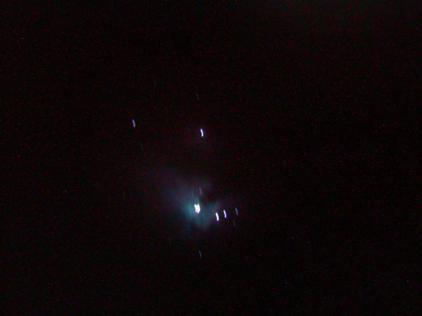
M42 in Orion at full-frame
25mm eyepiece, 8 second exposure, ISO 800, no zoom, full-frame image
Subject: CoolPix 995 and ETX-70 Sun and Moon photos Sent: Tuesday, January 22, 2002 4:19:42 From: tobin.dsl@verizon.net (The Tobin's) Here are some of my first attempts of sun and moon with the Scopetronix Digi-T adapter.
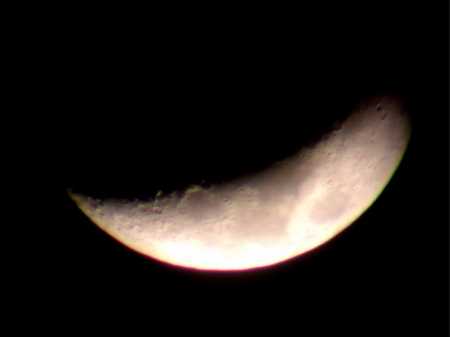
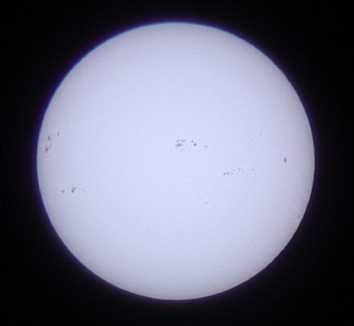
ETX 70AT with, Nikon Coolpix 995, 25mm Eyepiece, Baader Filter, Paint Shop Pro (re-size and sharpen).
Subject: Fw: Photos Sent: Thursday, January 24, 2002 13:29:04 From: divenuts@gte.net (divenuts) I wanted to send you two photos with the ETX 125 and Nikon CoolPix 995. The moon came out remarkably clear,even when enlarged. The photo of Jupiter is untouched other than blown up a bit. If you look closely in the top left you can make out Europa and it's small shadow(taken1-23). I live in one of the most light polluted counties in Fla.(Pinellas) so I was pleased with the results. You get the credit for my enthusiasm. Thanks, Chuck Callaghan
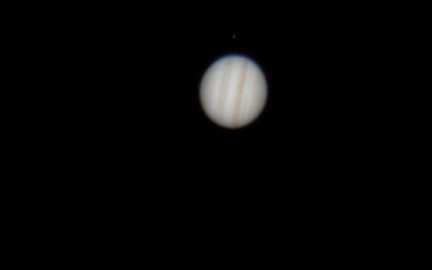
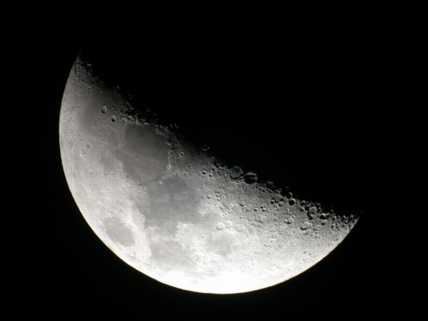
Subject: Nikon-Tripod Sent: Saturday, January 26, 2002 10:37:00 From: divenuts@gte.net (divenuts) I was reading your update(in the astrophotography Tips) and got the idea that you have the Deluxe field tripod #883. Is it steady enough for attaching the CoolPix 95 in the polar alignment? I was going to TRY polar alignment and use the 'bulb' exposure(60 sec. and turns off the speedlight). Have you tried this method? Thanks(and sorry if I missed the answers somewhere) Chuck CallaghanMike here: I do have the ETX-125EC mounted (Alt/Az) on the #883 tripod. It would be less stable in Polar mounting with the -125. As to the Bulb exposure mode on the Coolpix 995, do you have the remote shutter cable? If you don't, you would have to hold it down by hand and that would induce a lot of vibrations.
And:
No, I do not have the shutter cable! Hmmm, I wonder if the timer would work with the bulb setting? Damn, my wife took the camera today to see her Dad in Ft, Myers. She did stop and check out Scopetronix and mentioned she bought me a surprise.(Oh boy,more stuff..lol) She met Peggy and was quite impressed with the place.(Jordan wasn't in,probably out fishing) Is there any danger of the 125 tipping over with the Coopix 995 attached in the polar position? Also, is the purpose of a wedge to 'hold' the correct angle instead of relying on the knobs tightness? Boy, this stuff becomes addicting and time consuming.....I'm sure no one is more aware of that than yourself...lol Chuck CallaghanMike here: The timer only works for "timed" exposures and that only goes to 8 seconds. There is always a danger of tipping and adding the Coolpix won't make it worse or better. Wedges have many purposes, one of which is the put the center of balance of the telescope over the central portion of the tripod.
Subject: Re: digital cameras Sent: Saturday, January 26, 2002 13:17:17 From: saber@dircon.co.uk (saber) thanks for the tip. Actually I bought a reconditioned 950 from Focus Camera in New York, but when I brought it back to the UK I found the video out didn't work because its NTSC whereas Europe works on PAL, thankfully a friend has just gone to NY and Focus Camera were great about it and agreed to upgrade to a reconditioned 990, which I hope to get over the next couple of days. I did manage to take a few pictures with the 950 before I sent it back and the whole digital deal is facinating, being able to see your results instantly. Have you used your 995 (once mounted on your scope) as an alternative to looking down the occular the whole time, I was thinking about doing it, since whenever we get good seeing here in UK I end up getting a sore neck and have to stop observing for about a week till it settles down again. Do you ever get this problem? I was also thinking about hooking up the 990 to the etx and connecting the video out to a portable tv whilst observing, what do think? Also do you use the Digi-T system on your 995? Thanks again for your tip. Sam ----- Original Message ----- > Hi Sam, > I saw your e-mail on Mike's website and would steer you to the Nikon CoolPix > 995. In the astrophotography secton of Mike's site you will see some > examples of different cameras. The very first post under the Nikon samples > gives a COMPLETE review of the camera. I researched and e-mailed Mike and > Jordan Blessing of Scopetronics picking their minds. They both have the > Nikon and one of the best features in the rotating display screen...very > nice to be able to move the screen regardless of the ETX position. > I can't say enough good things about Jordan Blessing at Scopetronics...his > adapters are wonderful and he will answer any question you ask. > Just my two cents...I'm like you, very new to digital cameras...having a > great time learning. > Clear skies. > ChuckAnd:
I have used the 995 both places. I sometimes have the 45* corrector on the end of the scope with the 26mm or 40mm and at the same time having my TeleVue 8mm -24mm Zoom on top. That way I can move the camera without changing lenses. However, you have to be careful with the 45* corrector on the end when the scope is going to be pointing high in the sky...it will bottom out. The Scopetronix Digi-T is awesome. It threads right on the Nikon and gets the lens as close as possible to the eyepiece. I also have the Scopetronics Adapaview "U" that attaches the threaded part of the Digi-T to the Zoom. I really like the Zoom....makes changing focal lengths a snap with very little(if any) optical loss. The portable TV thing will work great also, I usually just take several photos and come in the house and review my photos there. As far as the sore neck...I adjust the height of my tripod to accommodate viewing. I saw your e-mail towards the end of the Astrophotography Tips section in the Astrophotography section(Helpful Information). I just started with astrophotography within the last month and you can see some of my first stuff towards the end of the Nikon CoolPix section in the Digital Camera section. Also you can see a couple of reviews(including mine) of the TeleVue 8mm-24mm Zoom under the eyepiece section. My next investment is coming up in about two weeks...I'm sending my ETX 125 to Dr. Clay for a "Supercharge", read about it in the "Tune-Up section...very cool! I'm looking forward to that service very much. Feel free to e-mail me with questions and ideas...I'm learning as I go. Good luck and clear skies, Chuck
Subject: Nikon remote cable Sent: Tuesday, January 29, 2002 15:30:52 From: divenuts@gte.net (divenuts) The last time I corresponded with you was regarding purchasing a digital camera for Chuck for Christmas and he is certainly enjoying the Nikon Coolpix. He now has a birthday coming up and I was going to get him a solar filter but read about the remote shutter release on your website. Any thoughts on which would be more useful? Also, while researching the remote cord for the Nikon Coolpix, the MC-EU1 I read some reviews. The negatives of the product dealt with the small keypad and how hard it was to operate. One reader recommended the Digisnap 2000 as an option. Have you ever heard of this item and if so how would you compare it to the Nikon remote cord. I've attached the website of the Digisnap. http://www.harbortronics.com/digimain.htm Here is more info on the Digisnap 2000/2200. http://www.steves-digicams.com/2001_reviews/digisnap2000.html Thanks for all you do. Your website is terrific. Jeanne Callaghan divenuts@gte.net By the way, Chuck is at UPS shipping his ETX-125 to Dr. Clay for a supercharge.Mike here: I hadn't heard of the Digisnap. It costs less than the Nikon remote cable. But unlike the Nikon remote cable, the Digisnap seems to require a computer. I don't have either (yet). I did see a report months ago about a non-Nikon cable frying the port on the camera. I don't think it was referring to the Digisnap. As to which would be more useful, well, like a lot of answers, that depends. A quality solar filter adds the Sun to the objects you can view with a telescope. That can be a lot of fun. On the other hand, for pushing the envelop of digital camera astrophotography, a remote shutter cable can be VERY handy. It also has some non-astronomical uses as well.
Subject: Coolpix M42 Sent: Saturday, February 16, 2002 8:08:45 From: rigelsys@home.com (rigelsys@home) Attached is a 30 sec photo of the orion nebula I shot with the 16 inch at El Camino College, bright skies and all! Used the Nikon Coolpix 995 and the remote release cable. No noise reduction used. I set aperature to 2.0 (wide open) in manual mode and held the remote button down for 30 seconds. I used rigel for focusing, and a 55mm televue plossl. I haven't played with white balance, and I didn't take a dark frame to subtract. So there's a few more tweaks, but it does show what can be done without much thinking about it. Leon
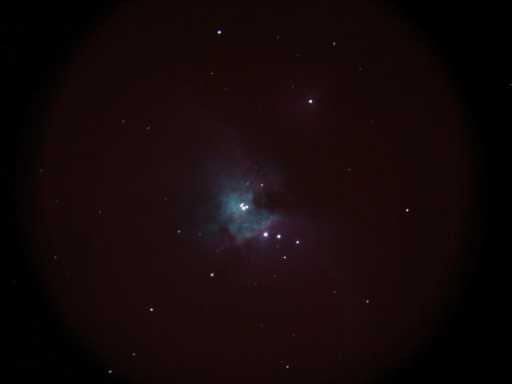
Mike here: Leon mentioned to me that a local camera dealer is selling the Remote Release Cable for the Coolpix 995 for $100 ($35 less than retail) so I picked up one last night. And of course, the skies got cloudy! While his photo above wasn't taken with an ETX or DS telescope, it does show what can be accomplished with the Coolpix 995.
Subject: My First Images Sent: Wednesday, February 20, 2002 16:21:19 From: mk@frasercre.com (Michael Kaye) I know you get a lot of these, but even so I thought you might like to see my first attempts at imaging the moon through my brand new ETX 105. The image details are as follows: ETX 105 Super Plssl 26mm (the one that comes with the ETX's) Nikon Coolpix 995 - 1/16 second, F5.1, ISO 100 and handheld thru the eyepiece Photoshop & Graphic Convertor to lighten and unsharp mask the images. Thanks for your previous advice and such a great site.
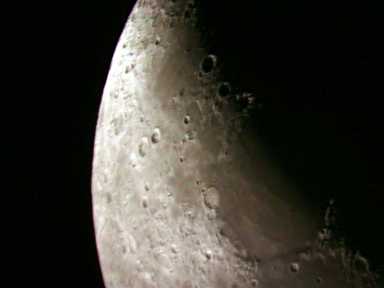
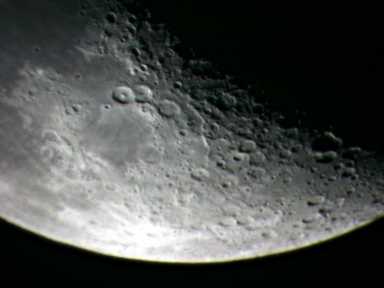
Subject: Yesterdays astrophotos Sent: Thursday, February 21, 2002 2:54:35 From: rosen@pixmix.a.se (Peter Rosn) Yesterday evening the weather was very cold here in Stockholm and the sky was not very clear (moonlight difusing in the haze). I decided to stay indoors and observing through an open window with my ETX-105 (I know this represents the worst imaginable conditions, but the air was nontheless quite steady). So I decided to try to take some shots by eyepiece projection (26 mm) into my SLR Nikon D1X digital camera, on a separate tripod. As the light was quite dim, I shot the moon at an equivalent of ISO 800 and the planets at ISO 3200. The planets are each composited from 3 exposures of 1/4" and enhanced in Photoshop. The moon is a mosaic from 5 shots at 1/6" - 1/8" and further enhanced in Photoshop. Considering the conditions in which the pictures were taken, I am sure the telescope has a huge potential for improving the quality in the future. If you like these images, I will continue to send in my results in the future as they will improve. Thank you for your great site and all the help you are sharing. Sincerely / Peter Rosn -- Peter Rosn e-mail: rosen@pixmix.a.se
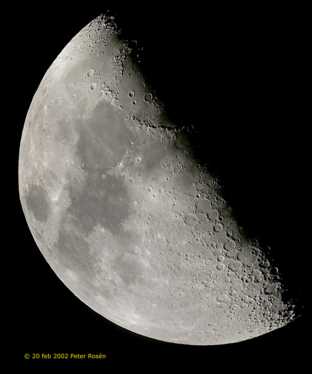
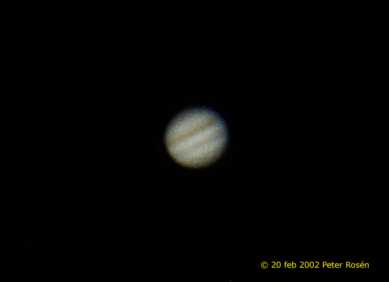
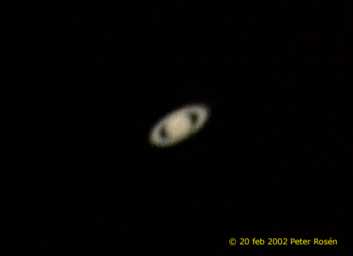
Subject: Nikon Sent: Friday, February 22, 2002 16:06:04 From: divenuts@gte.net (divenuts) I was wondering as a fellow 995 owner, how the shutter release cable was working...I'm still trying to decide between the Nikon version or the DigiSnap 2000. http://www.harbortronics.com/digimain.htm I bought a Scopetronix thread on Solar filter instead.....Hello, cloudy weather! I haven't seen any images from you lately.... Thanks, Chuck CallaghanMike here: My most recent Coolpix photos are on the Coolpix page. Haven't tried the remote yet.
Subject: hi Sent: Sunday, February 24, 2002 20:52:12 From: alfa1@isla.net (jose saavedra) hi my name is jose ,this photo i take by nikon coolpix 885 1/8 of sec the exposure time ,the telescope is etx 105, whit eyepice proyction thanks , and good planet photo hunting alfa1@isla.net
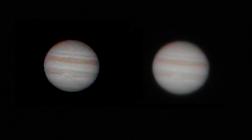
Subject: ETX Pictures with Nikon CP-995 digital camera Sent: Sunday, March 3, 2002 17:25:02 From: mike-hadley@att.net (Mike Hadley) We have finally made it back from Scotland and are getting re-settled here in Spokane. I recently got a Nikon CP-995 digital camera and have taken some reasonable pictures with my little ETX-90 EC. I have been using a digital image processing program called ImagesPlus (http://www.mlunsold.com) that has really helped the pictures a lot. You can see what I've done at home.att.net/~mike-hadley/Astronomy.htm. Cheers, Mike
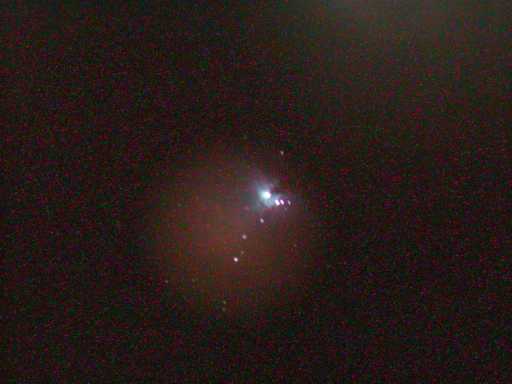
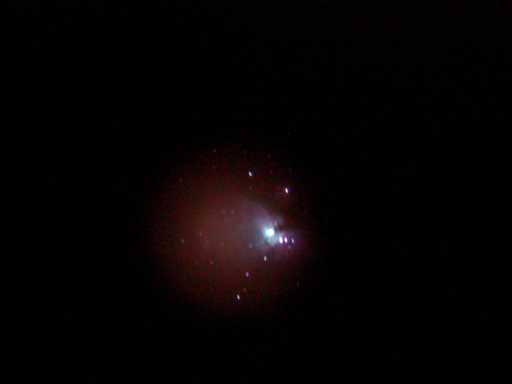
30 second exposure, ISO 800, noise reduction on, no zoom
ETX-90RA, 25mm eyepiece on the Shutan Wide Field Adapter
The difference with noise reduction off and on is pretty noticeable. But with the lens in its full wide-angle mode there is significant vignetting. The next photo shows that the vignetting can be reduced by zooming in.
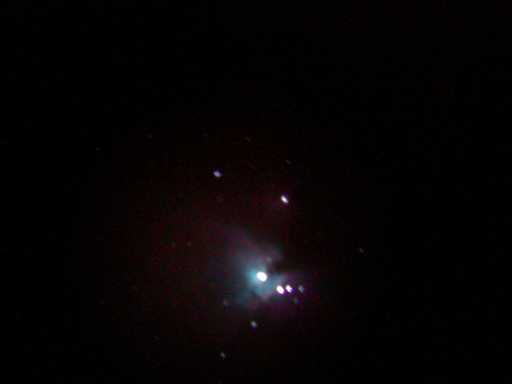
The next photo Canis Major and Orion) was taken with the camera attached to a regular photographic tripod and no guiding was done. At the scale of the image no trailing is evident. There was some slight editing of the levels to darken the sky background.
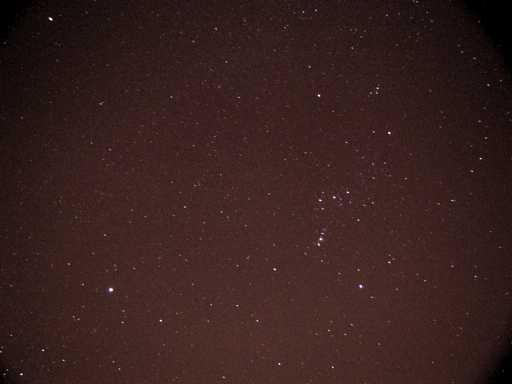
I discovered that if I zoomed the lens, trailing would become evident and the image would be slightly out of focus (in autofocus mode). So I put the Coolpix piggyback on the ETX-90RA and let the ETX drive run (mounted in polar mode). The following photo is of Orion's Belt and Sword with some levels adjustment to darken the sky background.
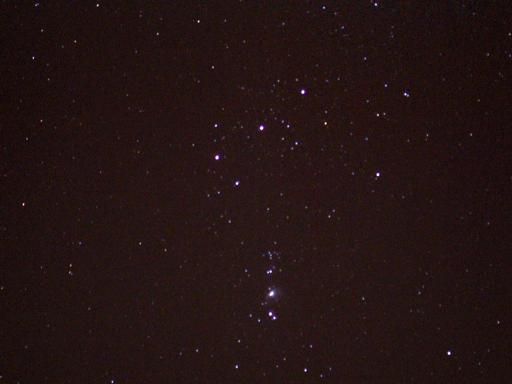
The following photo of M45, the Pleiades, was also done with the camera piggyback on the ETX. Some levels adjustment was done to darken the sky background.
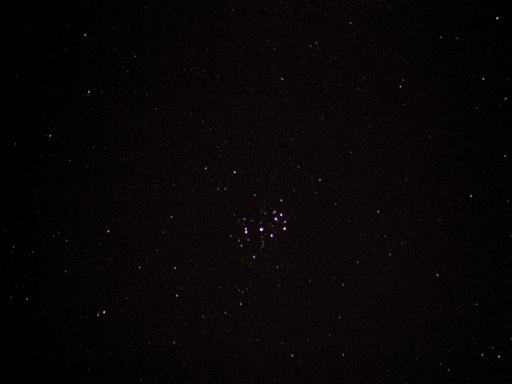
Subject: 995 photos Sent: Friday, March 8, 2002 10:01:02 From: divenuts@gte.net (divenuts) Very nice photos Mike! Glad to see a fellow 995 user enjoying the camera. I had been waiting for some images with your cable release...are you pleased with it's performance?. I really think the movable LED screen is the best for use with the ETX. I don't see how folks with other camera's get the images they do. I read with interest your experiences with the cable release.....it seems to be a necessity beyond using the timer. Two other questions. Are you familiar with any freeware that will run the ETX-125 via a laptop AND any cables that would allow a laptop to act as a viewing monitor instead of the LED on the camera. That would be excellent for focusing and image playback Thanks, Chuck CallaghanMike here: See the Accessory Reviews - Software page for any software that has been commented on. As to viewing the camera's LCD remotely during shooting, I don't think that exists. The remote worked OK; when I thought there were problems it was due to the LONG delay in writing the image to the card after the 30 second and 60 second exposures.
Subject: Jupiter Sent: Saturday, March 9, 2002 17:42:41 From: saber@dircon.co.uk (Saber Properties Limited) Tonight we must have had the best seeing I have ever seen in inner London since I became interested in Astronomy. To top it all I got the closest to aligning my 125 after about 18 months of trying. I also took a few pictures of Jupiter with my Nikon Coolpix 995 (I managed to upgrade my 950). Since I don't have Digi-t yet, I hooked my 995 as best I could using my camera tripod, I've attached the best image. I also took some pictures of Jupiter with my Canon hooked up to the ETX I'll send them once developed. I have to be honest before tonight I had decided to sell my 125 since I was so frustrated with not being able to align it, now I think I'll persevere a bit longer. Best regards, Sam
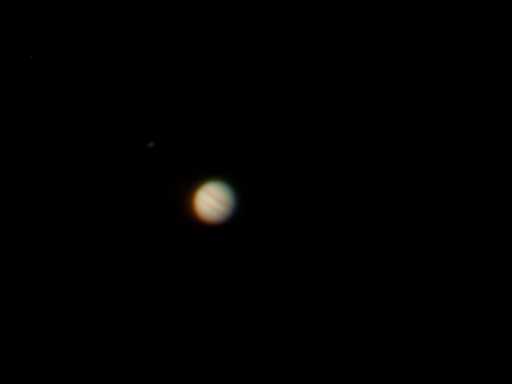
And:
From: sherrodc@ipa.net (Clay Sherrod) Good start Sam! Keep it up! Float before you swim and you will be world class! Glad you finally got everything working for you and I see much promise. Keep us posted! Clay
Subject: Nikon CP 995 Sent: Wednesday, April 10, 2002 17:56:34 From: r.rondjeff@verizon.net (Ron) I got my new camera a couple of weeks ago and would like to ask you a few questions. BTW I haven't found a new scope yet but I am still looking! I have a chance to attend my first star party this weekend and need some advice. I am planning on taking my camera with me to take some star pictures and hopefully someone with volunteer to let me take some pictures through their scope. I don't have the remote yet, it is on back order, but I was wanting to know if an 8" exposure will get me any pictures worth trying for? I know with my Kodak I always used the 16" exposure and some of my pictures didn't turn out too bad. Also, did you ever find a way to defeat or cover up that obnoxious timer light? I am afraid it's so bright it might light up the whole star party and I've read where bright lights are a no no. I don't know why Nikon put such a bright light on it! The Kodak only had a small red light that wasn't too offensive. So far the star pictures I have taken with the 8" exposures haven't been to disappointing. I know once I get to the star party, there are supposed to be some very good seeing conditions, so I should come back with some decent pictures. Anyway, I hope to get a chance to see a variety scopes and maybe be able to make a better decision on my next scope. Any suggestion, ideas , or information would be appreciated. Respectfully, RonMike here: Yes, you can get some shots @ 8 seconds. If you have some stacking software you can take several shots and stack them (or do it manually in Photoshop or other image editing software). Don't forget to use the self-timer and you'll likely have to supply your own adapter and maybe eyepiece(s) if the adapter hooks onto the eyepiece. As to the light, tape works.
And:
I do have the software, AstroStack, but haven't used it that much. At least I will have that to fall back on if I need too. I had thought of the tape but was rather opposed to that idea, and thought I had read where you were too. I still don't like the thought of putting tape on the camera, but unless I can come up with something better I will have to resort to that. I have ordered the step ring from Scopetronix. I all ready have the Digi-T.
Subject: Earthshine and Conjunctions Sent: Wednesday, April 17, 2002 4:33:59 From: stankiewiczr@cogeco.ca (Rick Stankiewicz) We have had so much cloud the last few weeks that it was a real treat to have a clear night last night to finally see the conjunctions. The attached images were taken with a Nikon Coolpix 995, south of Peterborough, Ontario last night around 8:30 to 9:00 p.m. Mercury had set by this point or was not visible from my vantage point. [Top] I believe the setting was about f/2.9 for 25 seconds.
[Bottom] f/8.2 for 10 seconds Rick Stankiewicz 3301 University Hts. Blvd. Peterborough, Ont. K9L 1T3 stankiewiczr@cogeco.ca
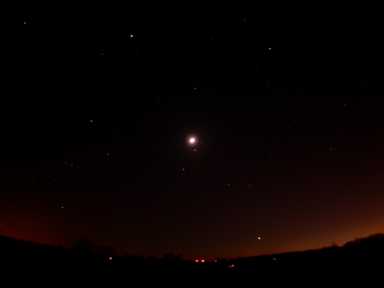
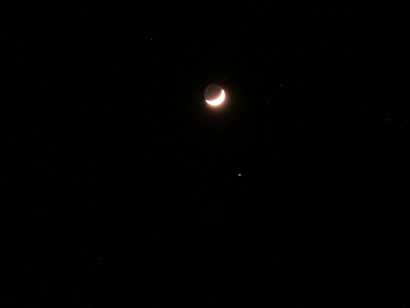
Subject: moon photo Sent: Thursday, April 18, 2002 14:25:19 From: marc.delaney@ntlworld.com (marc.delaney) Tonight, for the first time ever I decided to photograph the Moon. It is shining half way between new and quarter. I focussed my ETX-105 and the 26mm SP eyepiece and set the scope going on lunar rate. Then I set my Cooolpix-995 on Aperture priority mode at f 5.6 and infinity focus, then attached it to the scope (using a purpose made support supplied by the Meade main dealer here) so that the lens was close to the eyepiece and withing the rubber eyecup. I could see nothing on the camera LCD whatsoever --- just black! The finder scope confirmed that the moon was centred in the scope. I took a picture anyway, and of course it didn't photograph. I tried wide angle and telephoto setting, but to no avail. Now, I have seen photos on your website where the moon has photographed in ETX scopes with as little as 1/60 and 1/40 second exposures with Coolpix cameras. So why could I get nothing? Any thoughts, comments and advice most welcome and humbly solicited! And yes, I did take the lens cap off! Once more, my appreciation for an excellent website for us ETX users. Best wishes, Marc (Wales, UK)Mike here: Since you did not see the Moon on the LCD it is not surprising you got no photo of it. For the Moon you can actually use the Programmed setting instead of either A, S, or M. Depending upon the Moon's phase and the magnification you use, a fully automatic setting can work. But WHY couldn't you see the Moon on the LCD? I suspect that the optical path from the eyepiece to the camera was not aligned. Unless the camera lens is physically attached to the eyepiece (instead of attaching the camera using its tripod mounting hole) the camera may not be precisely pointed at the image coming out of the eyepiece. You can easily verify this: handhold the camera over the eyepiece, moving it around until you see the Moon's image on the LCD. Once you know that you can get the image into the camera, zoom in somewhat to reduce the vignetting and enlarge the image.
Subject: ETX 90 and Nikon 990 Sent: Sunday, April 28, 2002 10:14:22 From: ilovecoyotte@hotmail.com (David Feldman) I was planning on using the Digi-T adapter on my Nikon 990 with my ETX 90. I am worried about tracking when I connect the camera to my ETX 90. I have heard that some cameras can weigh down the scope and affect the slewing on objects. Will this happen in this setup? If so is there any other way to fix the problem, or is a different approach needed all together? Thank you for your time. David Feldman ilovecoyotte@hotmail.comMike here: You can see several Coolpix 995 examples on the Helpful Information-->Astrophotography page on my ETX Site. Weight can affect tracking so adding a counterweight can help. However, there are other limitations that you should be aware of. Tracking in Alt/Az mode will enduce extra vibrations and field rotation, so for best results of "long duration" exposures use Polar mode. Also, keep in mind that any vibrations are magnified when using afocal photography. If you keep exposures short (as can be seen on the Coolpix and other pages) you can get good results.
And:
One more question. Should I put the camera on the top of the scope or on the backside.Mike here: Prime focus photography is usually done at the rear; afocal on top. Of course, if you have an adapter an eyepiece on rear port you can do afocal with the camera mounted there. I have done afocal in both positions.
Subject: Coolpix 995 Driver Sent: Sunday, May 26, 2002 11:32:18 From: saber@dircon.co.uk (Saber Properties Limited) I am using my 995 on my PC which operates on Windows XP. Are you familiar with using the 995 with XP? Cheers, SamMike here: I use Mac OS X, not Windows XP. But check the Nikon site (http://www.nikontechusa.com/) for any XP Coolpix software. I don't use any Nikon software since Mac OS X supports the camera directly. I just connect the camera to a USB port on the Macintosh and the images are imported automatically into Apple's iPhoto software. Cool.
And:
Thanks for the response. In case anyone else has any problems with WinXP and the coolpix 995 (or any other coolpix model I imagine), I've spoken to Nikon and they said I need the latest version of their software, NIKON VIEW 5.0.1. This includes drivers for XP, I think the specific driver is clpxusb.inf. Regards, Sam
Subject: Nikon photography Sent: Saturday, June 1, 2002 12:05:48 From: marc.delaney@ntlworld.com (marc.delaney) Just received Scoprtronix Digi-T for my Nikon Coolpix-995. May i pick on your expertise and experience (not to forget your real generosity in giving us so much help through your website!) to ask if you can figure out where I went wrong on these two astrophotography attempts? (1) Tried photographing the Sun ---- using proper Solar filter, of course! Camera on infinity focus and self-timer, all else on auto.The image I saw through the eyepiece had outlines around the sunspots (like thin pen-lines traced around them), but the image the camera took showed only the sunspots, not the outlines. (2) Tried to photograph M3, intending to stack several images in photoshop. The Coolpix-995 shutter can only be opened for 8 secs maximum on self-timer, so I set it at this and widest available aperture and infinity focus, and took several shots. Results: just black blanks. Not a speck of anything else on the frames. Did I goof, or is it just not possible to get astrophotos with my kit? Thanks for forthcomming opinion, and you super website. All the best, MarcMike here: As can be seen on the Helpful Information --> Astrophotography --> Nikon page, the Coolpix 995 can be used for astrophotography. The sun, moon, planets, stars, and bright deep sky objects can be photographed. The sunspot images may have been over or underexposed, hence hiding the lines you saw. Autoexposure doesn't always work perfectly. For deep sky objects, use the highest ISO setting (800) and perhaps Noise Reduction. 8 seconds may not result in satisfying images; the remote release cable (which gets you the B setting for 60 second exposures).
Subject: Coolpix 995 Sent: Tuesday, August 6, 2002 12:13:03 From: Duncan.Wheeler3@btopenworld.com (Duncan Wheeler) Hope you can help ? I have just purchased a coolpix 995, and hope to use it with my 8" SCT. I'm quite new to all of this and still learning, I would like some advise on what to get, with regards to either the digi T adaptors, or Wide Angle eyepiece/adapter both from scope tronix. I suppose I want the best of both worlds, something which i can used to image the planets and some deep sky objests (dont know how good deep sky objects come out using this method ?), and also take some Photos of the full moon. Will I need 2 types of the eyepiece/adaptor ? Hope you can help ? Dark Skies, Duncan WheelerMike here: See the Helpful Information --> Astrophotography page and the pages linked from there. I think your questions may be answered. If not, write back.
Subject: Denny Cannon's Nikon CP950 Home Page Sent: Wednesday, August 7, 2002 19:48:27 From: jbjulian@thurston.com (Jerry Julian) Here is a good site for making accessories for the Nikon 950. I was thinking of getting the Nikon 4500 but found a great deal on a Sony F707 so bought it and now am in the process of building an adapter and weight balance for my ETX-90ec and a friends 10" Meade scope. home.hiwaay.net/~drcannon/cp950/index.html Enjoy your new book! Jerry Julian jbjulian@thurston.com
Subject: Nikon 995 vs. 4500 Sent: Monday, August 19, 2002 15:17:29 From: SDBELVEAL@dow.com (Belveal, Shawn (SD)) Any reason to select the Nikon Coolpix 995 over the new 4500? Thanks, Shawn BelvealMike here: I have no familiarity with the 4500.
Subject: Recent Images - Moon and Venus ; Orange Crescent Moon Sent: Tuesday, August 20, 2002 16:48:58 From: stankiewiczr@hotmail.com (Rick Stankiewicz) Since my recent move from Peterborough to Keene, I have established a Hotmail account and still managed to get a few digital images with my Nikon Coolpix. The crescent moon and Venus was taken in downtown Keene, Ontario on August 10th.The orange crescent moon was the highlight of my August 12th Perseids watch. The haze was so bad here that the moon disappeared before it even hit the horizon. I saw a few nice meteors that night, but the frequency was so low that I was unable to get any "good ones" on film. 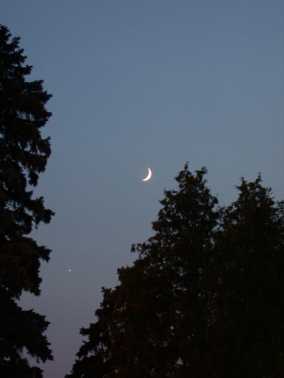
On Sunday August 18th I shot the attached images of the big sunspots that currently grace the face of our star. I noticed on the recent SpaceWeather site that people had noticed the shapes of these spots changing. On my attached image (from Sunday afternoon), one looked a lot like the continent of Australia and there other one looked a lot like a "little dipper" to me. What do you think? 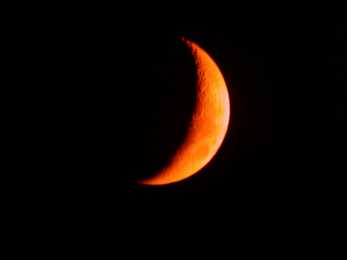
I shot all these images with a Nikon Coolpix digital through my Meade ETX telescope. I was just on my back deck in Keene, Ontario. It was a great afternoon! Enjoy the images. Rick Stankiewicz Keene, Ontario 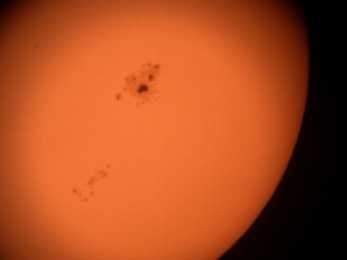
Subject: About astrophotography Sent: Saturday, August 24, 2002 09:54:45 From: r24044@hkstar.com (Mike Leung) I want to ask if I want to take some photos of Jupitar or Saturn, how long the exposure time should I take?? My telescope is Meade LXD55 S-N 10" Camera: DC Nikon Coolpix4500 Thank you so muchMike here: That depends on how you take the photos and the ISO setting you use. You'll probably be doing eyepiece projection, so the exposure will depend on the magnification (or size of the image on the viewscreen, including whether you use a macro mode or zoom in). The nice thing about digital cameras is that you can do a lot of experimentation in a short time and delete the images that don't work out. So, start with short exposures, say 1/4 second and work you way to 2 seconds. See how they turn out and make adjustments as needed.
Subject: Astrophotography Sent: Tuesday, September 10, 2002 16:44:30 From: Esacameron@aol.com The attached photo is a wide field exposure I made in Seattle under very light polluted skies. It consists of 10 20 second exp. made with a Nikon CP4500 of Cygnus in Aug. I used a Digisnap remote control and the noise reduction feature on the camera for each shot. The temp was in the mid 60's and I can't wait to try this in the winter at freezing temps. (oh boy lucky me). The 10 stack was assembled in Photoshop and each layer was screen blended with a curve and hue saturation layer on top. The camera was not attached to the ETX125 altho subsequent tests showed a piggyback arrangement (aligned in polar mode) works well for wide field shots. These shots were mounted on a barndoor tracker I built. By copying and pasting sections of Starrynight Pro into the stack in Photoshop I was able to determine how much noise got thru and what magnitude stars were recorded. I was impressed with it because it shows stars down to about 11 magnitude and it shows the color haze of the Milky Way. I hope this inspires others to try this with digital cameras. It's kinda lonely sometimes.
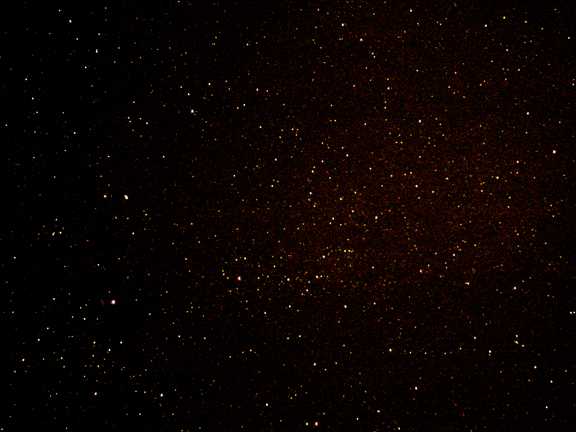
Mike here: No need to feel lonely. There are a lot of digital camera astrophotographers. Lots of examples on the ETX Site and even the recent issue of Sky&Telescope magazine had an article on digital camera astrophotography.
Subject: Coolpix question Sent: Saturday, September 28, 2002 19:11:48 From: brayton@attbi.com (Ted Brayton) I bought a Coolpix 4500 to go with my 105. From what I have read, it is probably best to set focus to infinity, and use the self timer to allow the scope to stop shaking. Because both functions use the same button, it doesn't seem possible to use them both, am I missing something. It appears to me I can focus to infinity, and push the shutter, or use the self timer with auto focus or macro. Please send help. Thanks, Ted Middleboro, MAMike here: I initially had the same concern with my Coolpix 995 but it does seem to work OK with the self-timer. The docs imply that it goes into Macro mode for self-timer but that can't be right. Afterall, if you are taking a family portrait with you in the photography by using the self-timer, you are not taking a photo in Macro mode. So, in practice it seems to work OK. I used the self-timer for the missile launch photos I posted recently (on the "Just for Fun" page) as I didn't have time to dig the remote release cable out of the bag!
And:
Just got inside from my first morning viewing and first attempt with my new camera, and the self-timer in macro mode does seem to work fine. I wanted to view Saturn for the first time, but thought I would have to haul my scope across a large cranberry bog at 4 AM to do it, but when I awoke at 6 AM, I found the moon directly above my house. Now that I know I can view it from my front yard, I will be up early Monday to see Saturn and hopefully photograph it for the first time! I bought the STWA18 Wide Angle 18 MM Eyepiece/Adapter from Scopetronix. It's great. You unscrew the rubber eye-guard, screw the filter directly onto the lens of the Coolpix 4500, and drop the whole thing right into the scope, no step rings nor any vignetting. Man, do the folks at Scopetronix make it simple. After viewing the results of my first attempt at astrophotography, I am pretty pleased. After getting to know the camera a bit better, I should get some better results. However, I will need some type of photo-editing software, and the remote release shutter cord to make a significant jump in improvement. Thanks again for your advice, which makes this hobby easy to enjoy. Ted Brayton Middleboro, MA
Subject: Nikon Remote Release Cable Sent: Sunday, October 13, 2002 13:11:39 From: DonMcClelland@webtv.net (Donald McClelland) Congratulations on your succesful 2nd Annual Star Party. I wasn't surprised and sure did miss going there. I noticed that you now have a Nikon Remote Release Cable. Any advice on how to get one and how much it is at your source? Thanks DonMike here: I picked it up earlier this year at a local camera store for $100.
Subject: Coolpix 4500/ ETX 105 Sent: Friday, October 18, 2002 21:24:32 From: brayton@attbi.com (Ted Brayton) I have successfully taken many pictures of the moon. However, using the same setup, I can't seem to photograph Jupiter or Saturn. I get it in my LCD screen, zoom in nice and close, and snap the pictures using the delay feature. When I go to look at the pictures on the computer, nothing but blackness. I once got a very weak picture of Jupiter through the darkness, but only I can see it there. I changed the contrast from 0 to 2.0 but it made no difference. What should I experiment with next? Ted Brayton Middleboro, MAMike here: Try using a manual exposure setting (assuming that model Coolpix has one). You could also try increasing the ISO speed rating.
Subject: Moon shot Sent: Sunday, October 20, 2002 11:15:44 From: BOBCATH28@email.msn.com (ROBERT DEROUIN) This enclosed image of the Moon is purely an accident taken with my Meade 125ETX! Hope you can post it! It was hand held using a 26mm Meade Plossl and a Nikon Coolpix 885 digital camera. Exposure was set on auto....(1/32 sec @f/2.8). Shortly after this image was taken, the scope was sent to Meade for repairs on the drive system. Thanks for your time, Mike!! Bob Derouin, Johnston,RI
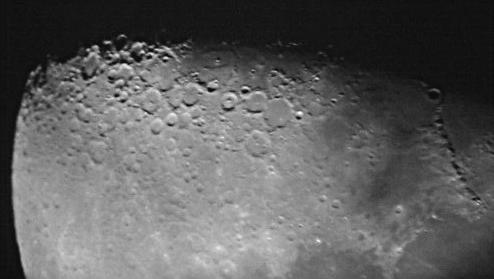
Subject: Coolpix 775 astrophotos Sent: Sunday, October 27, 2002 4:53:22 From: HSchilling@birch.com (Schilling, Henry) Here are some pics I took with a Coolpix 775 (only round 2. They will get better). ETX-125EC /26mm ep w/nd filter and scopetronix adapter. They have been reduced in size. Hope you will post some or all. Thanks again Mike. hjs
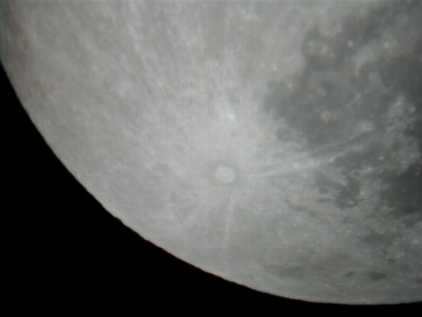
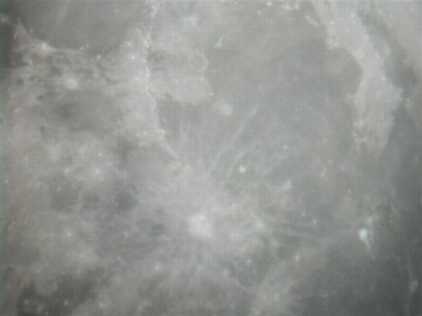
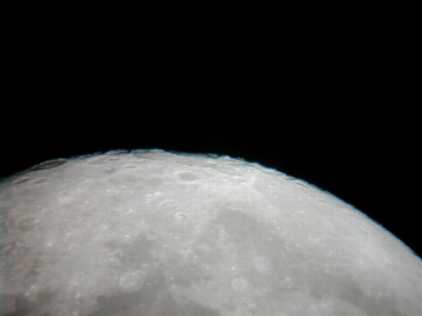
Subject: guest moon pics Sent: Sunday, October 27, 2002 23:28:06 From: ekeup@prodigy.net (Erik Keup) This is my first try of astrophotography of the moon. Telescope: ETX105EC UHTC Camera: Coolpix 950 Exposure: 1/125th sec Eyepiece: SP 40mm (bad for visual, but fine for camera use) Environment: 90% humidity, bad light pollution, no guiding Method: Handheld over eyepiece Date: October, 2002 Software: Paint Shop Pro Adjustments: -60% Brightness, +40% Contract, Grey Scale conversion, Sharpen mask I've since bought a digi-T adapter and flexifocus... that should help, I definitely need a remote for the coolpix next... Hope you like the pics. Love the site! Keep up the great work. Erik Johnson City, TN
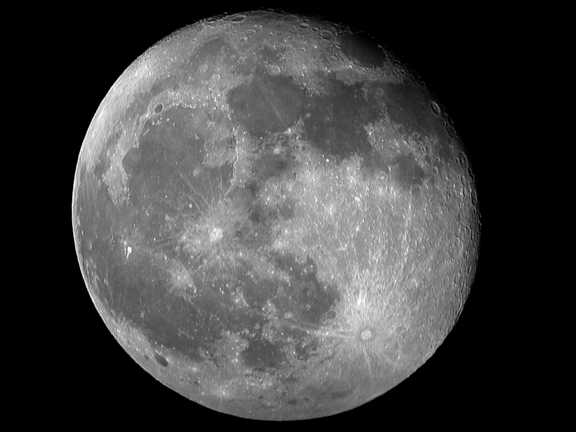
Subject: Coolpix 880 Sent: Monday, November 4, 2002 21:02:33 From: ve7cer@shaw.ca (Charlie) Been looking at some of the great pics of Saturn with the ETX 105 EC and the 125 mm.am not using a Meade but a Celestron C5.I can see Saturn just great but for some reason my Nikon 880 wants to shoot at 7 seconds,just wondering if the person using the 105 EC or any 125 mm can post just what they did.Some great pics on this web sight.Charlie
Subject: Photo of moon with A Meade ETX Sent: Sunday, November 24, 2002 7:27:54 From: mmathosian@comcast.net (mark mathosian) Thought you might like to add this new shot to your site. Here's the caption for the photo. Earth's moon - November 24, 2002, 5:30 a.m. Meade ETX 90EC telescope using ScopeTronix, Inc. 18mm wide angle lens and Nikon Cool Pix 995 camera at wide angle. Shot by Mark Mathosian, Naples, Florida. Mark P.S. Love your website. MM
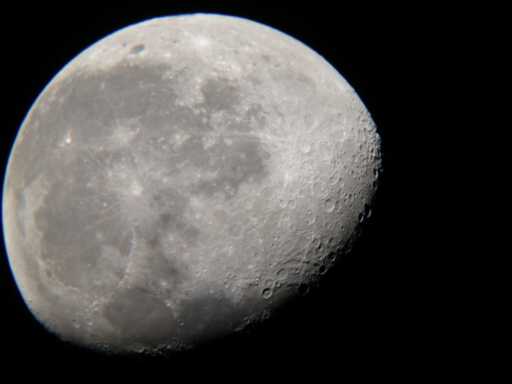
Subject: Venus just before sunrise Sent: Sunday, December 22, 2002 5:19:01 From: MMathosian@aol.com here's a shot of Venus I took with my scope this morning. Seems like I get the best shots early in the morning from Naples, Florida.Mike here: Looks overexposed as Venus is about a "half-moon" phase right now.Venus - December 22, 2002, 5:30 a.m. Meade ETX 90EC telescope using ScopeTronix,Inc. 18mm wide angle lens and Nikon CoolPix 995 camera at wide angle (flipped to proper position with Adobe Photoshop). 
And:
Interesting. I didn't realize Venus was at half- moon. Could I have shot a different planet? It was high in the East at about 5:30 a.m. I assumed it was Venus. What do you think? Could I have misidentified it? It was located slightly southeast in the sky.Mike here: Venus is in the eastern sky now.
And:
here's a decent shot of the moon from this morning.And:Earth's moon - December 22, 2002, 530 a.m. Meade ETX 90EC telescope using ScopeTronix,Inc. 18mm wide angle lens and Nikon CoolPix 995 camera at wide angle. Shot by Mark Mathosian, Naples, Florida. (sharpened by 2 adjustments, contrastenhanced and flipped to proper position with Adobe Photoshop. 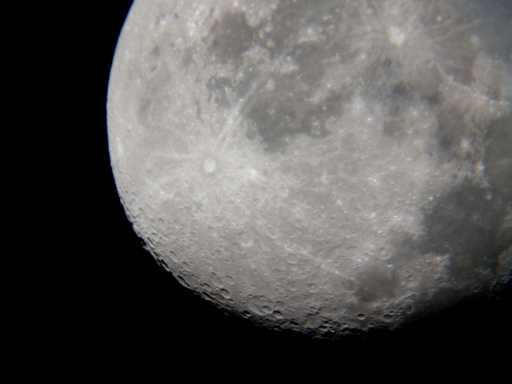
Earth's Moon - December 22, 2002, 5:30 a.m. Meade ETX 90EC telescope using ScopeTronix,Inc. 18mm wide angle lens and Nikon CoolPix 995 camera at wide angle. Shot by Mark Mathosian, Naples, Florida. (flipped to proper position with Adobe Photoshop, sharpened and contrast added. 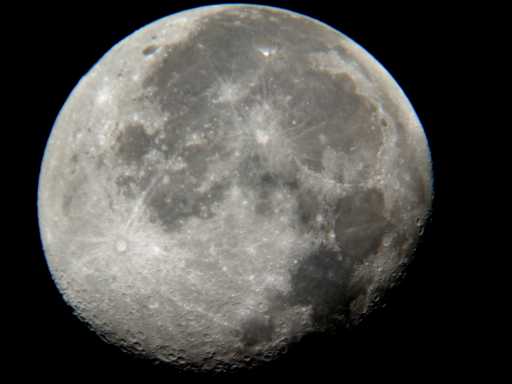
Subject: moon shot for 12.29/02 Sent: Sunday, December 29, 2002 4:19:01 From: mmathosian@comcast.net (mark mathosian) Here's a moon shot from this morning, December 29, 2002 at about 5:30 am. Shot with Meade ETX 90EC telescope using Scopetronix, Inc. 18mm wide angle lens and Nikon Coolpix 995 digital camera. sharpened one notch with Adobe Photoshop. Shot from Naples, Florida.Mike here: dust on the eyepiece...I have been experimenting with Adobe Photoshop and it you apply some filters you get artistic results. Here's a shot of the moon with the "cutout" and "grey scale" filters applied. 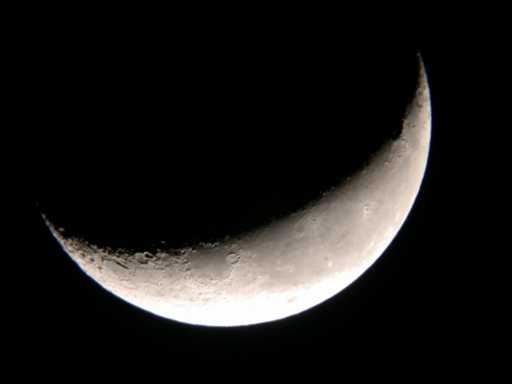
Here is a shot of the sun. Are those molecule type shapes supposed to be there or does it appear to you that my lens is dirty? 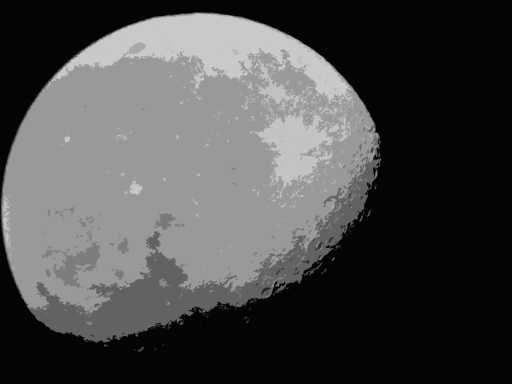
Mark Mathosian 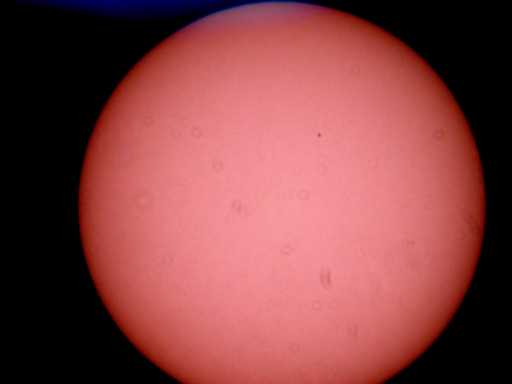
Subject: Digital Photography Sent: Sunday, December 29, 2002 7:37:45 From: N2MWE@aol.com Like your new LXD55 site...might have to get one down the road for the great Mars appearance in August. Anyway, I'm looking at digital cameras for astrophotography, and I like the Nikon 4300. What I want to know is how long are most exposures for say, star clusters like the Double Cluster, or would I have to experiment a little? I'm using the ETX 125 EC, and I will be using the Scopetronix adapters. Any suggestions? Clear skies KieranMike here: Open star clusters like the Double Cluster won't fit into the field of view of most eyepieces so for best results you'll likely do piggyback photography. For that, exposures of 30-60 seconds can be done without manually correcting for tracking errors. But you have to be polar mounted to avoid field rotation. If you manually correct for tracking errors, using a high power eyepiece, you can extend the exposure to several minutes, depending upon your sky conditions.
Mike here: I took some photographs of Saturn, Jupiter, and M42 in Orion using my Nikon Coolpix 995 and my new LXD55 8" Schmidt-Cassegrain telescope. I mention this here because I tried a new focusing technique. I first focused the eyepiece to my eye and had the camera set for INFinity. I then attached the camera to the eyepiece using the Scopetronix Digi-T System. To this point this is what I've always done. The image on the camera LCD appeared to be in-focus. I then zoomed the camera lens to a full Digital Zoom. On the camera LCD I was able to see that the image was slightly out-of-focus. I adjusted the eyepiece focus until the image was in focus (for stars I minimized the size of the star's image). I then returned the camera zoom to normal for the photograph. I even attempted some shots with full digital zoom. Since I was shooting at high resolution (1280x960) when I reduced the image size for posting on the web site the image quality was pretty good. The images posted on my LXD55 Site are single-frame (not multiple images stacked via software) and even though were done on a larger telescope than the ETX, the techniques are still applicable on all telescopes with many digital cameras. Click to see the planet photographs and the deep sky photographs.
Subject: sun photo Sent: Monday, December 30, 2002 5:32:30 From: mmathosian@comcast.net (mark mathosian) Thought you might like this one. Mark Earth's Sun - December 29, 2002, Meade ETX 90EC telescope using ScopeTronix, Inc. 18mm wide angle lens and Nikon CoolPix 995 camera at wide angle and Class A Solar Filter. Adobe PhotoShop used to enhance color. Shot by Mark Mathosian, Naples, Florida.And: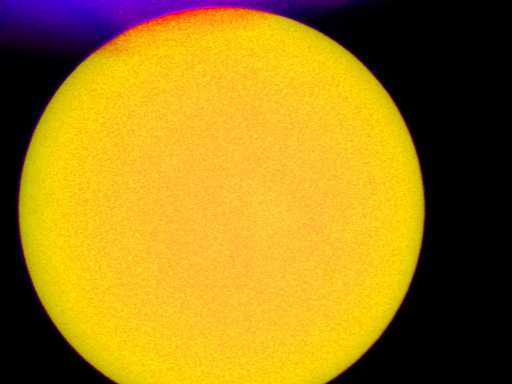
Here is a shot of the moon enhanced in Adobe PhotoShop by appling the cutout and plastic wrap tools. I noticed that by applying plastic wrap, you see many lunar details. It is amazing what you can do with a program like PhotoShop. And this is not the expensive version of the program. It is the limited edition.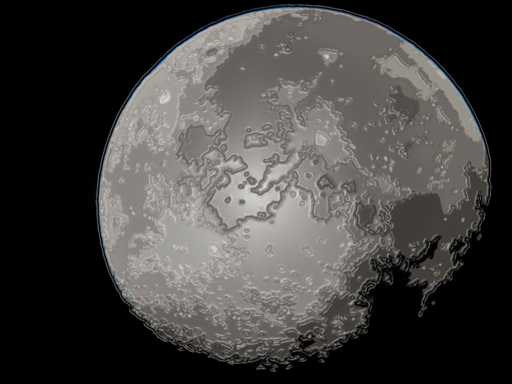
Subject: Nikon995/Jupiter Sent: Tuesday, December 31, 2002 13:51:50 From: divenuts@gte.net (divenuts) I took this photo of Jupiter12/28/02 and caught the Red Spot transiting. I used an ETX-125 with a Nikon 995 using Scopetronix Digi-T and the Adaptaview "U" on aTeleVue Zoom 8mm-24mm lens set at about 13mm. My first attempt at stacking using Registax and slight enhancements in Photoshop. Registax allow JPEGS and color. Here is the link: http://aberrator.astronomy.net/registax/ Chuck Callaghan
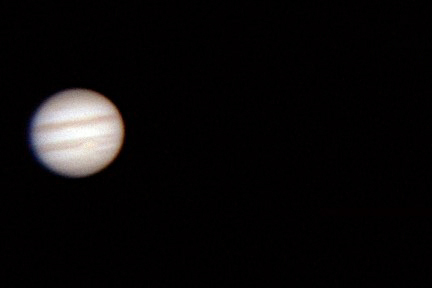
Return to the top of this page.
Go to the next Nikon Coolpix Astrophotography Page.
Go back to the Astrophotography Page.
Go back to my ETX Home Page.